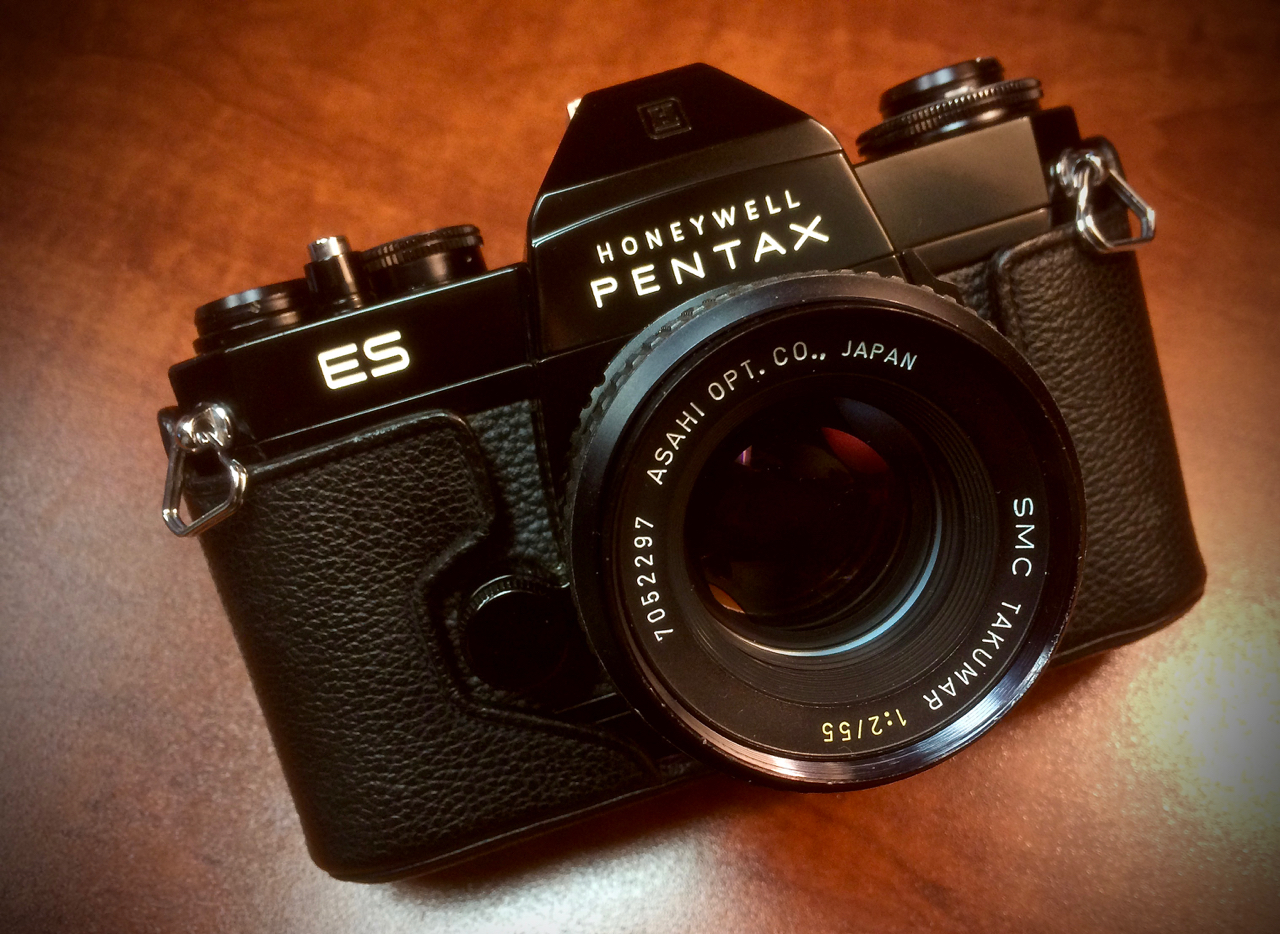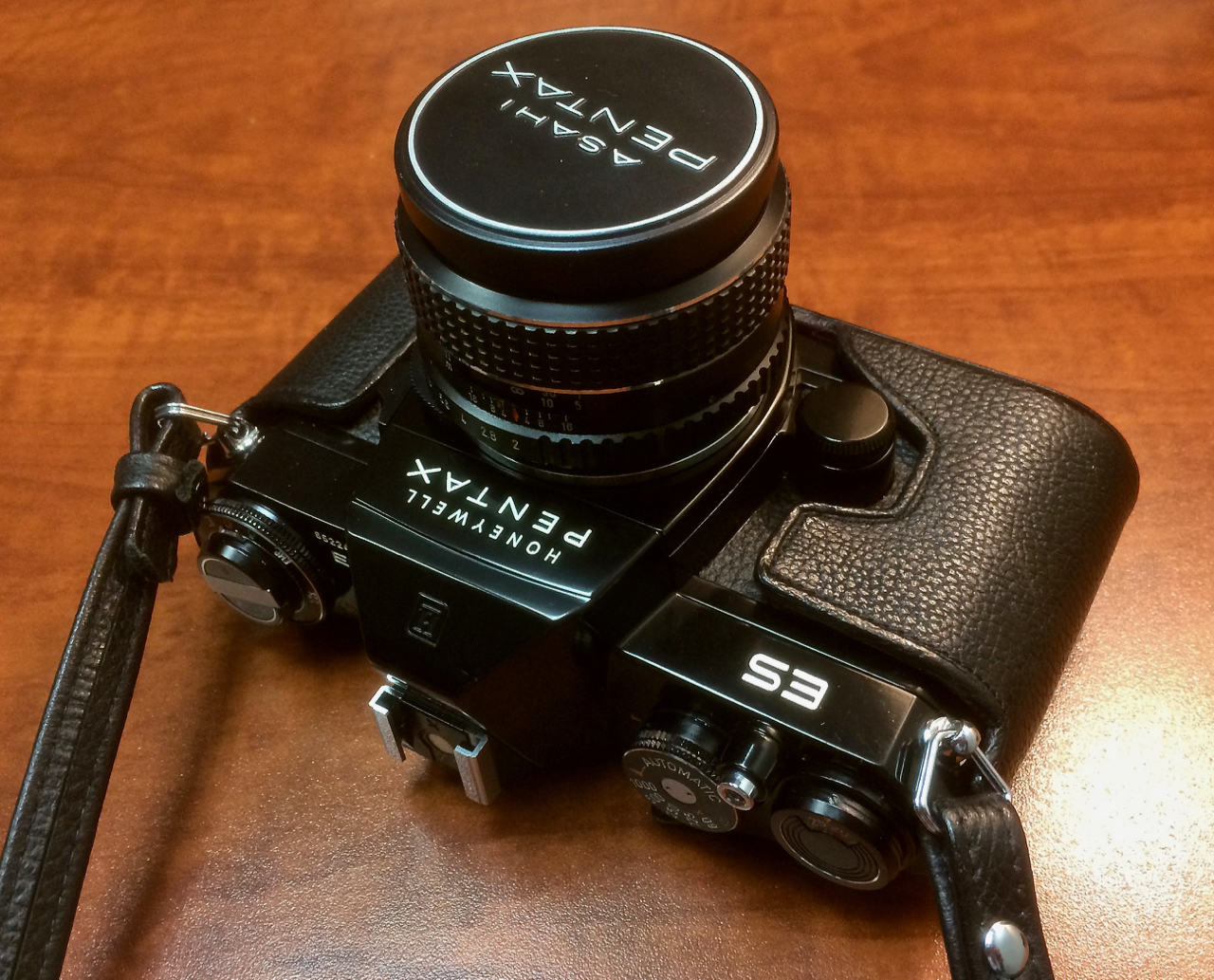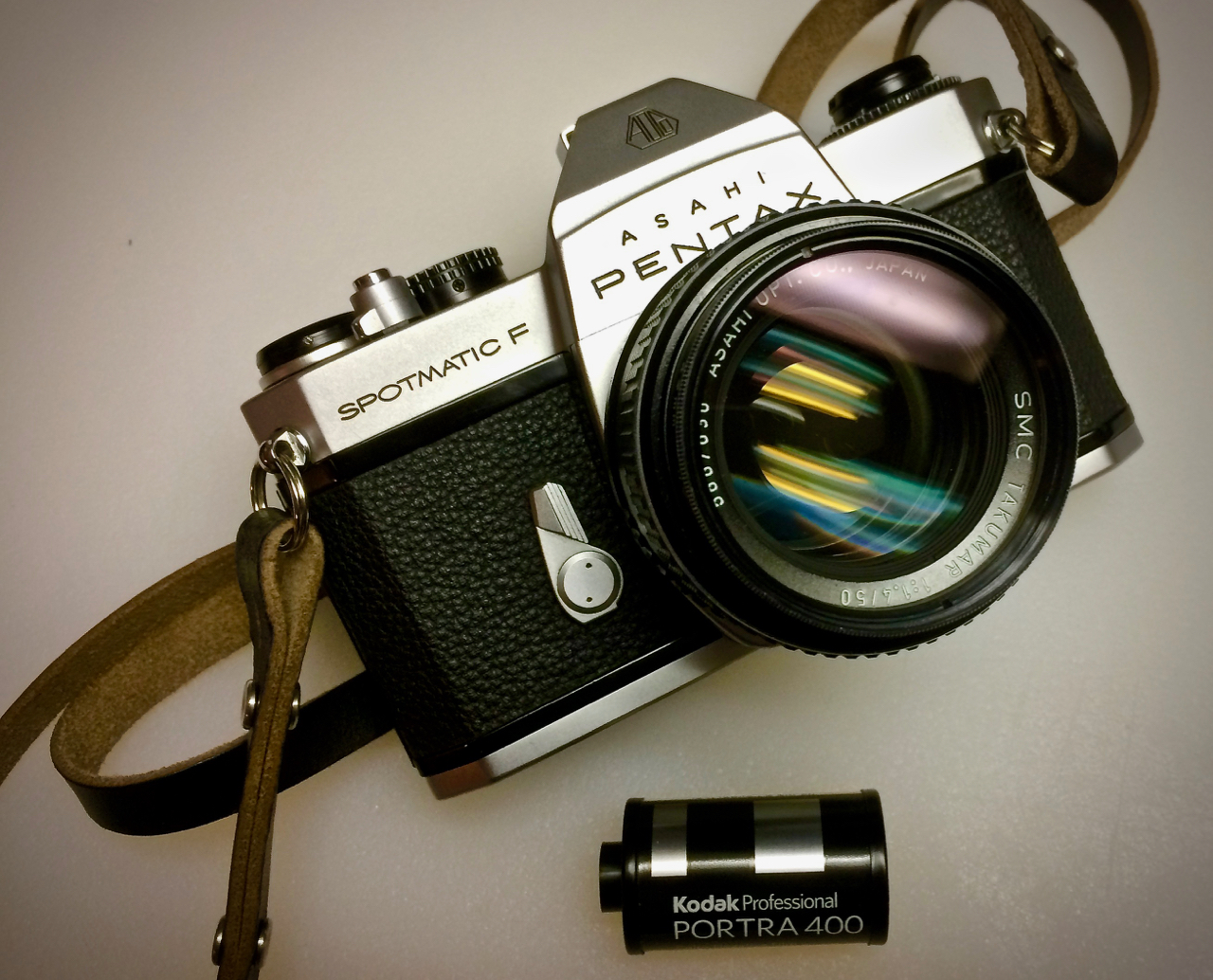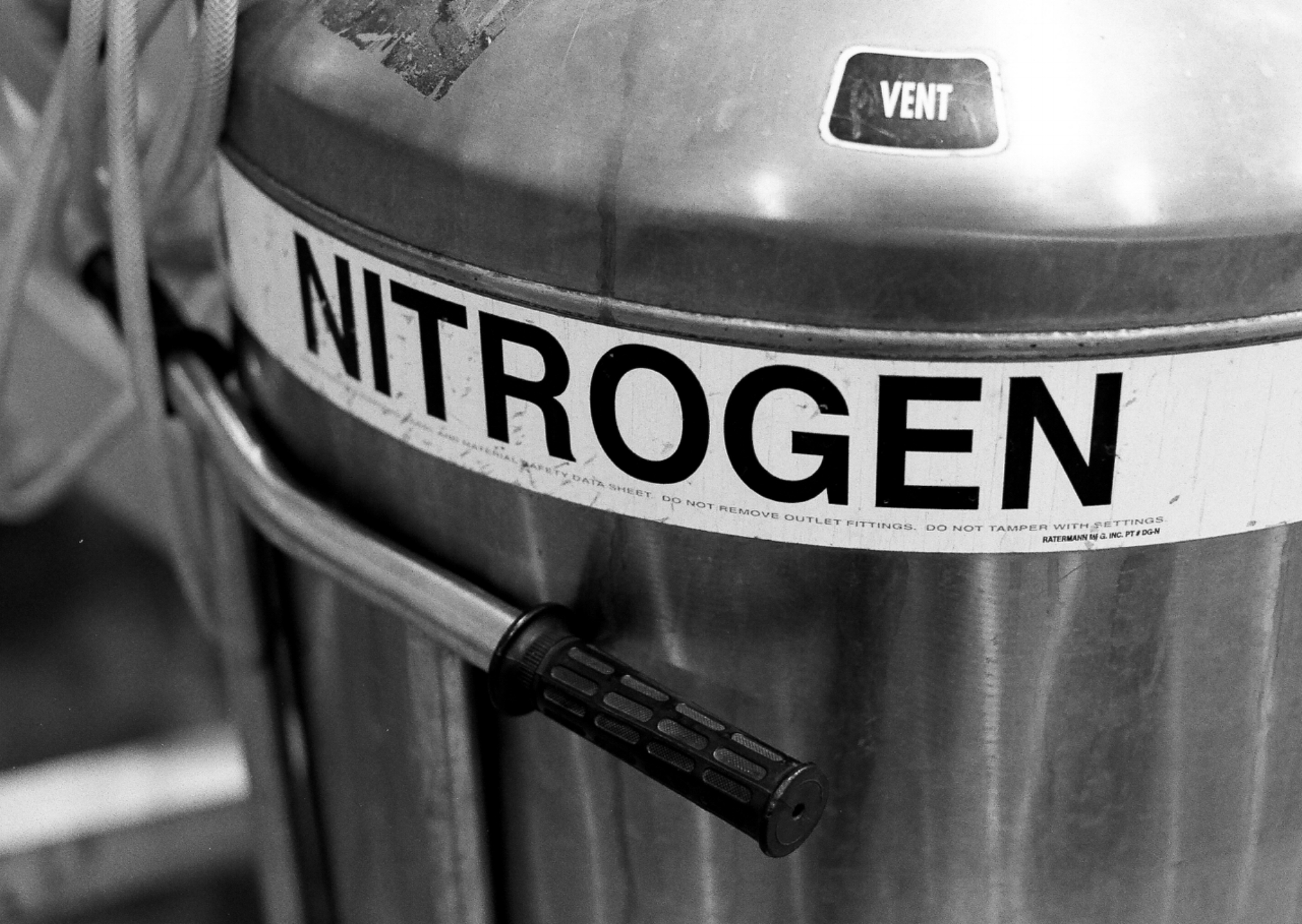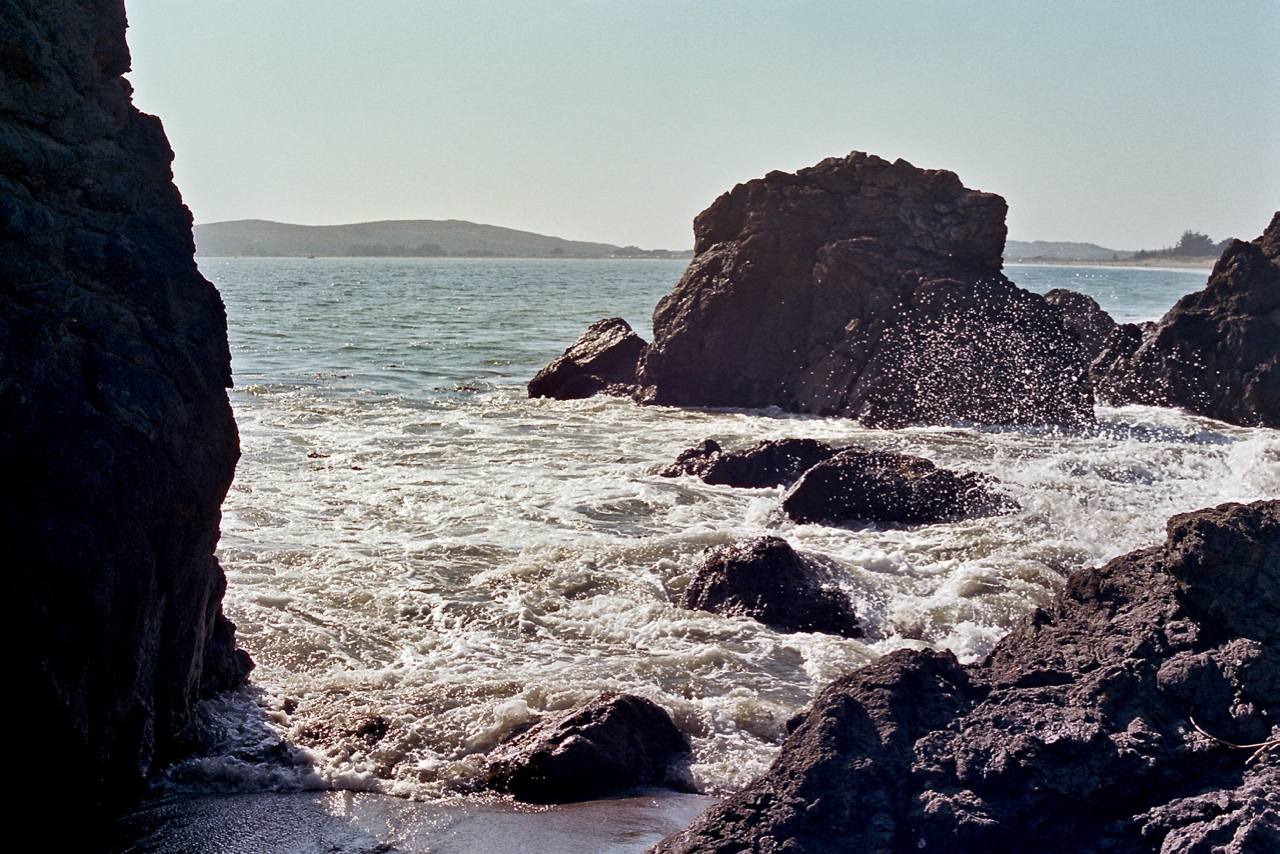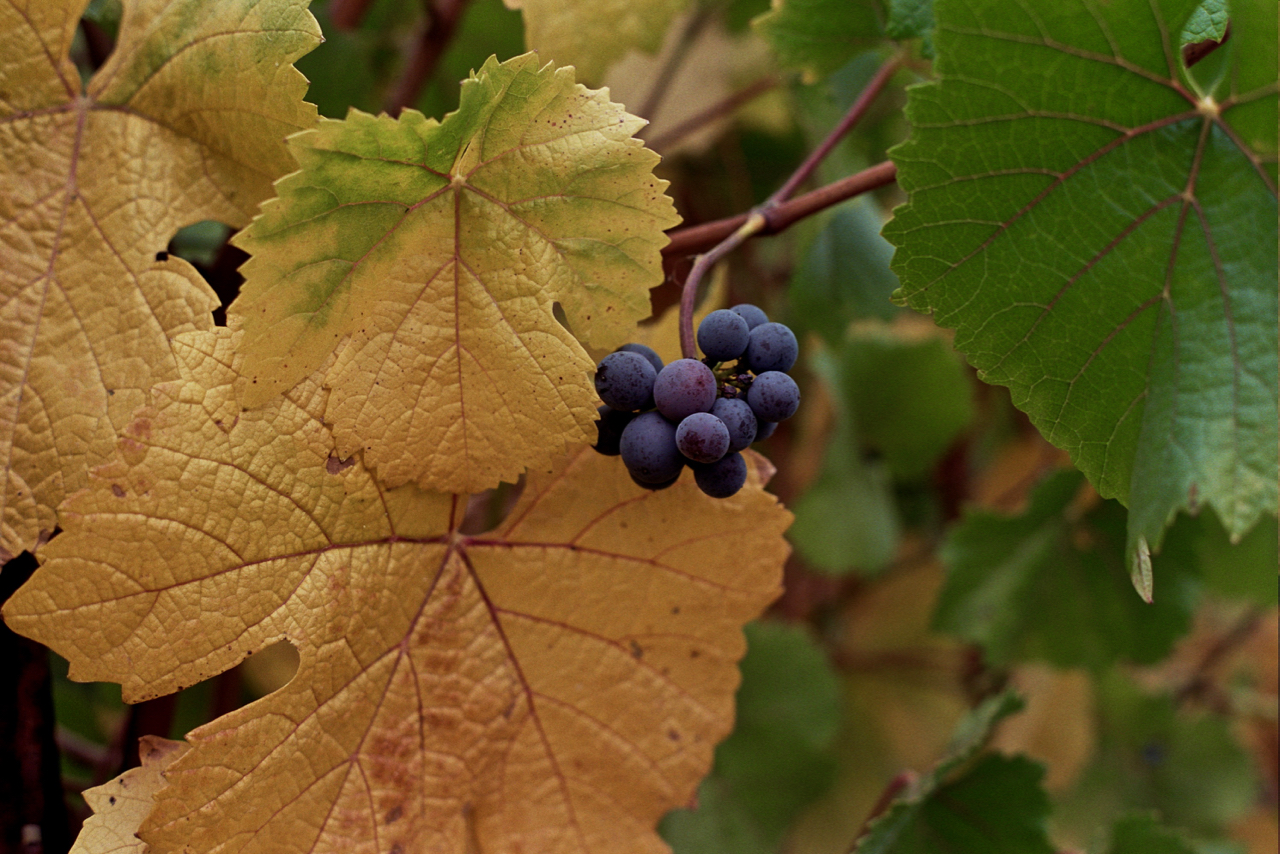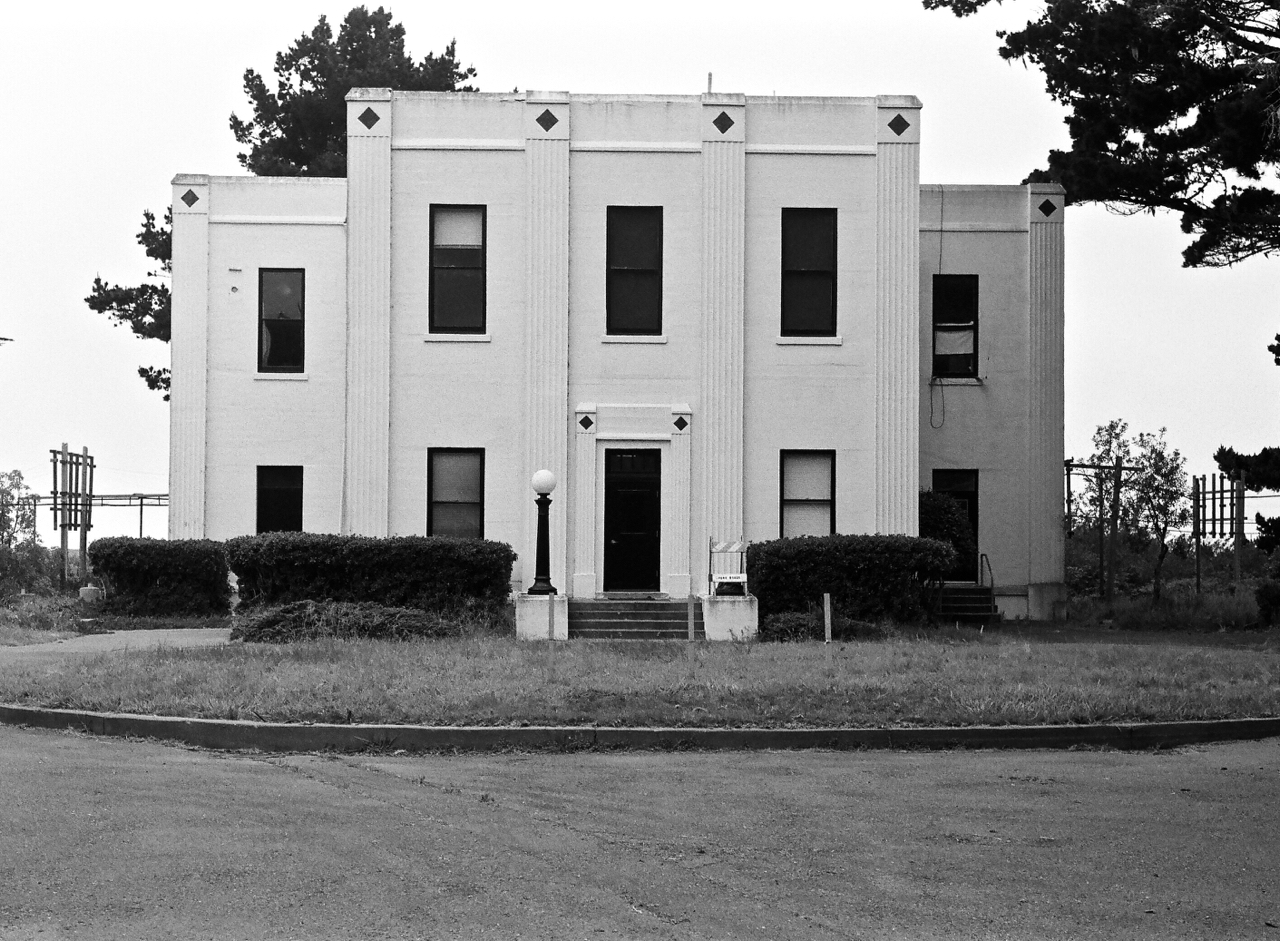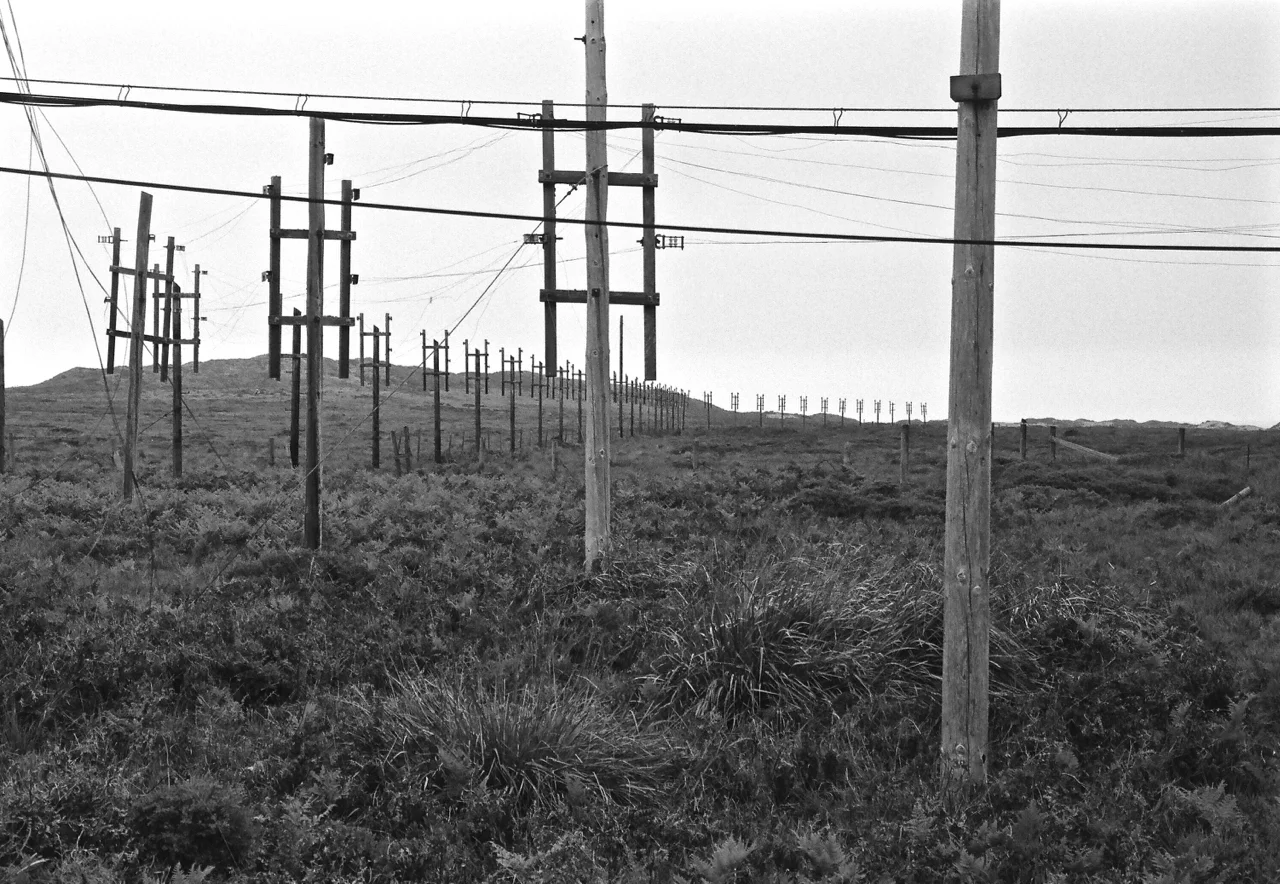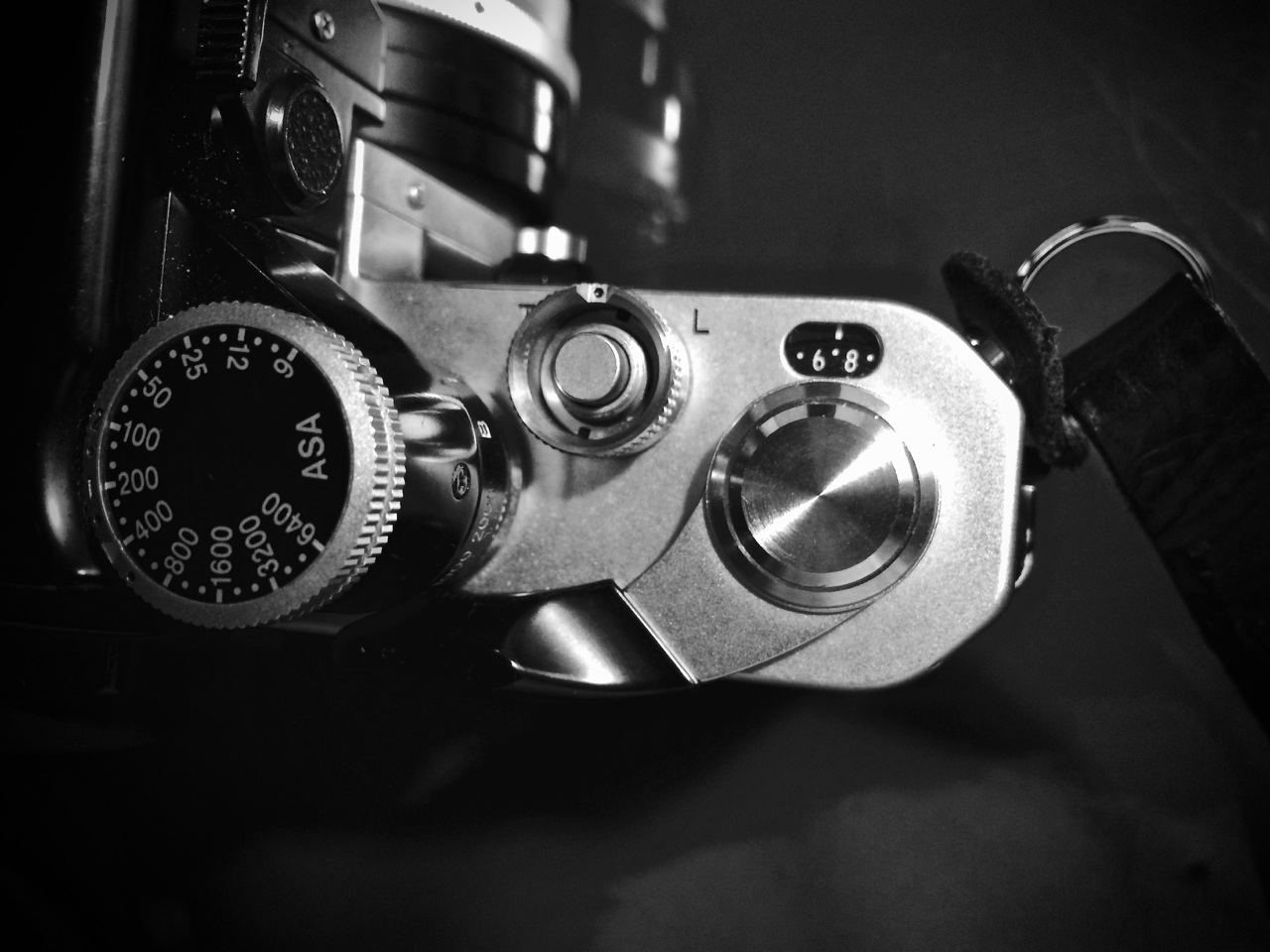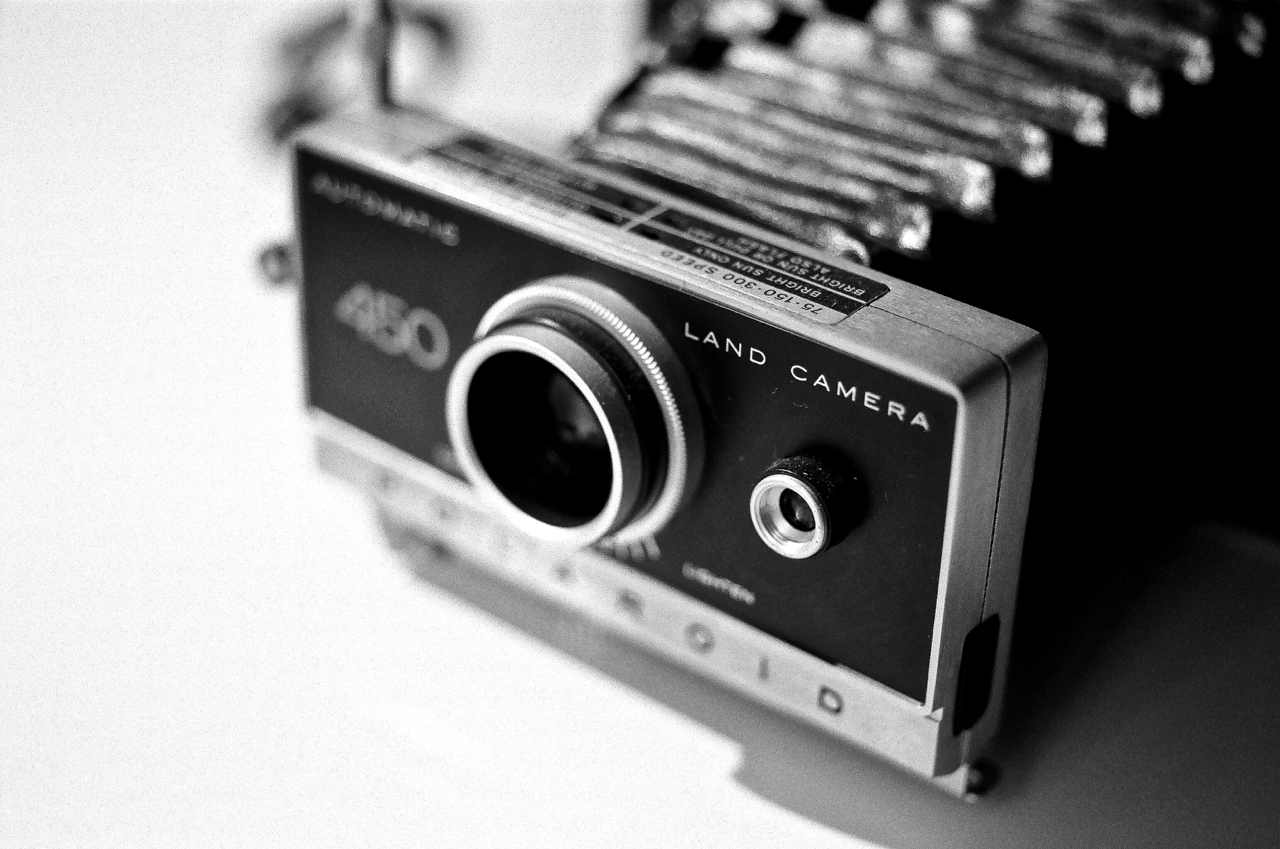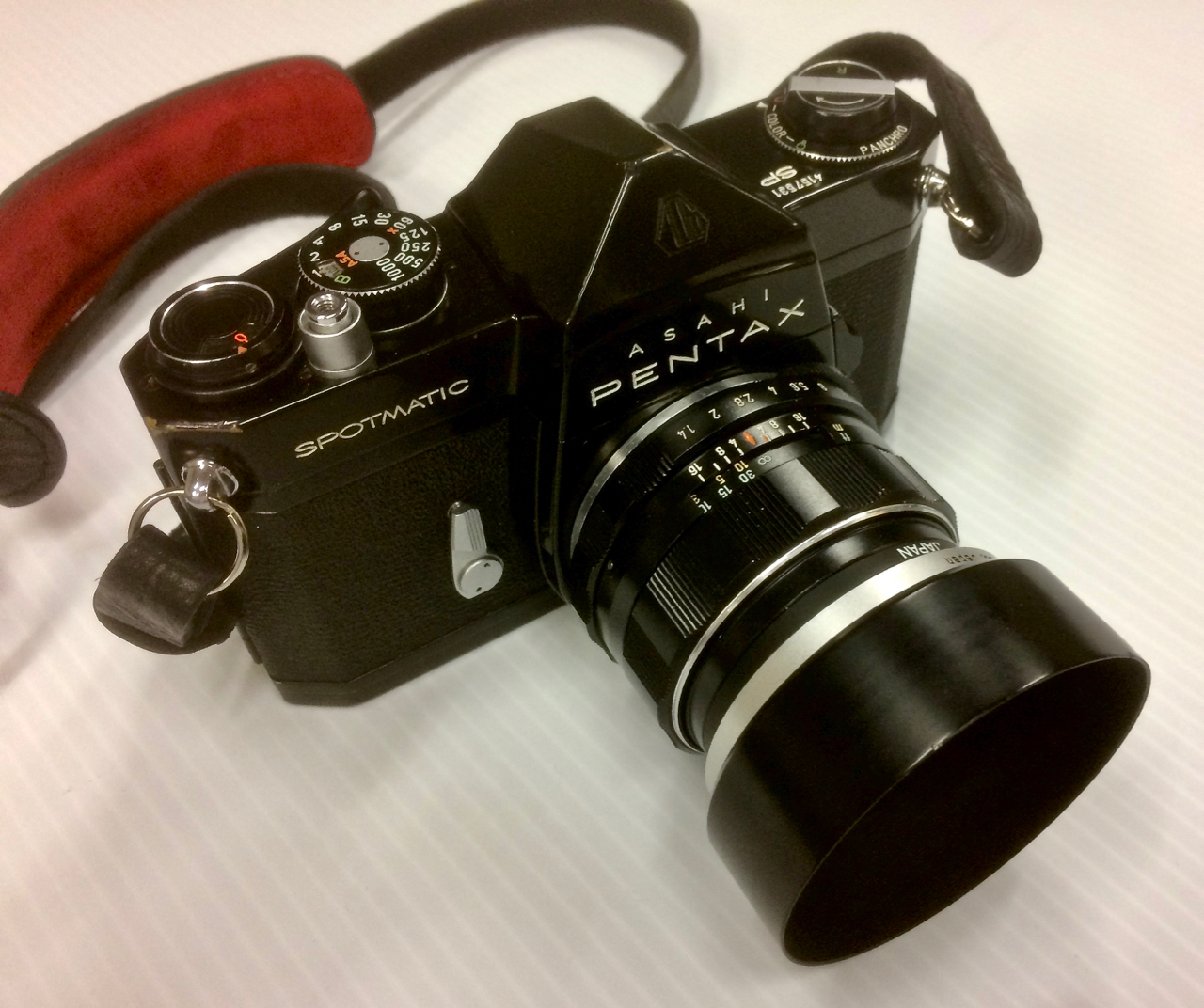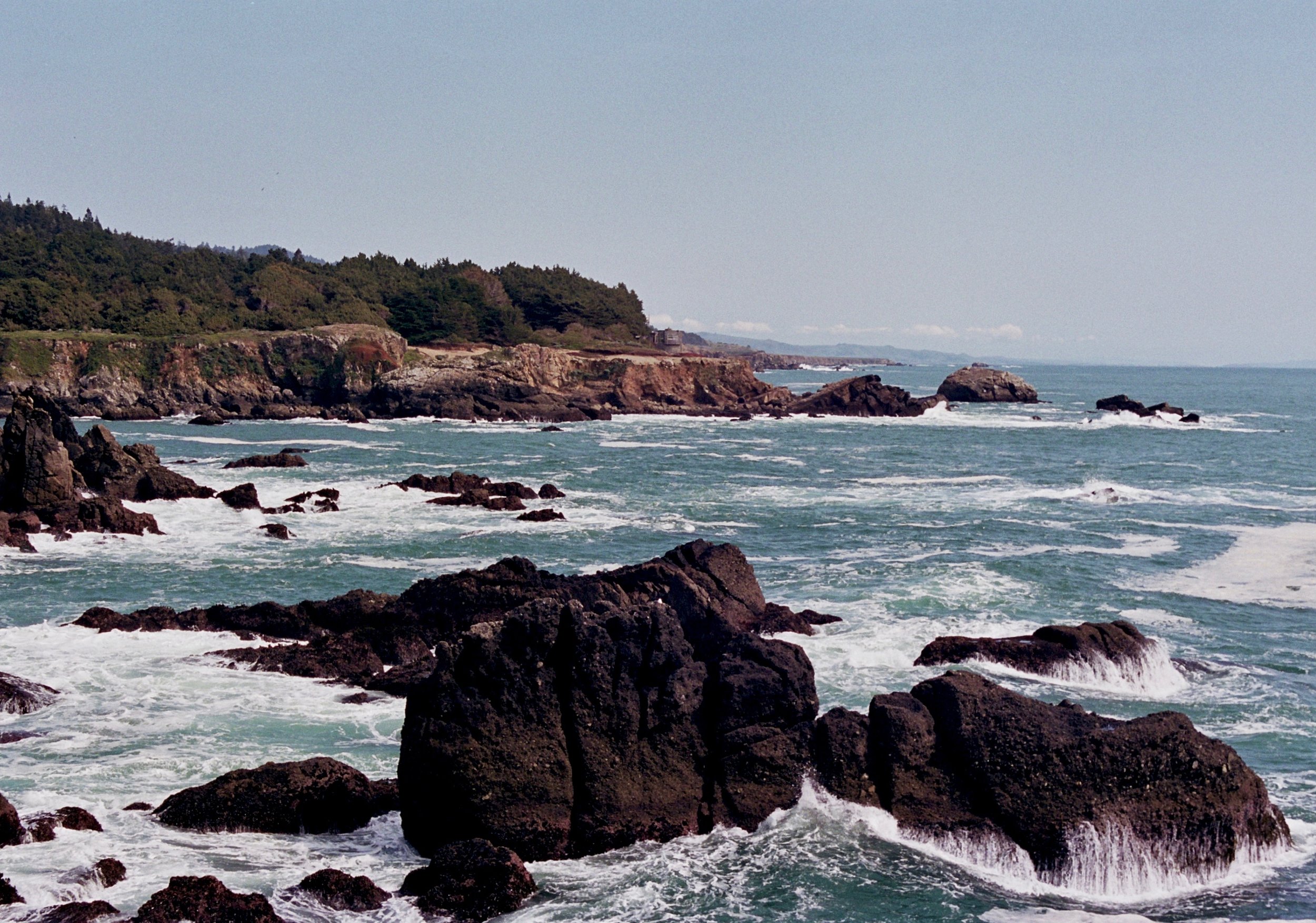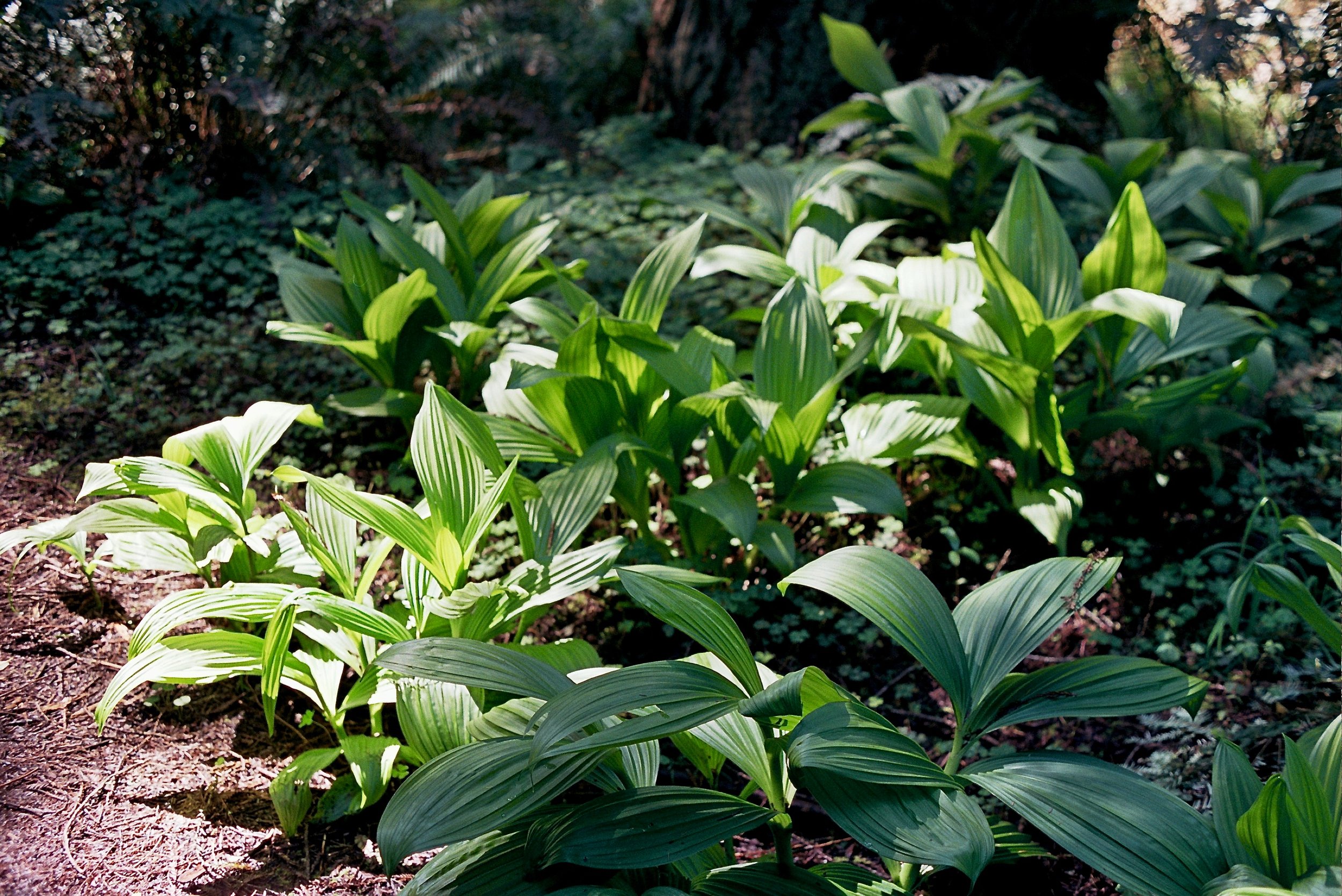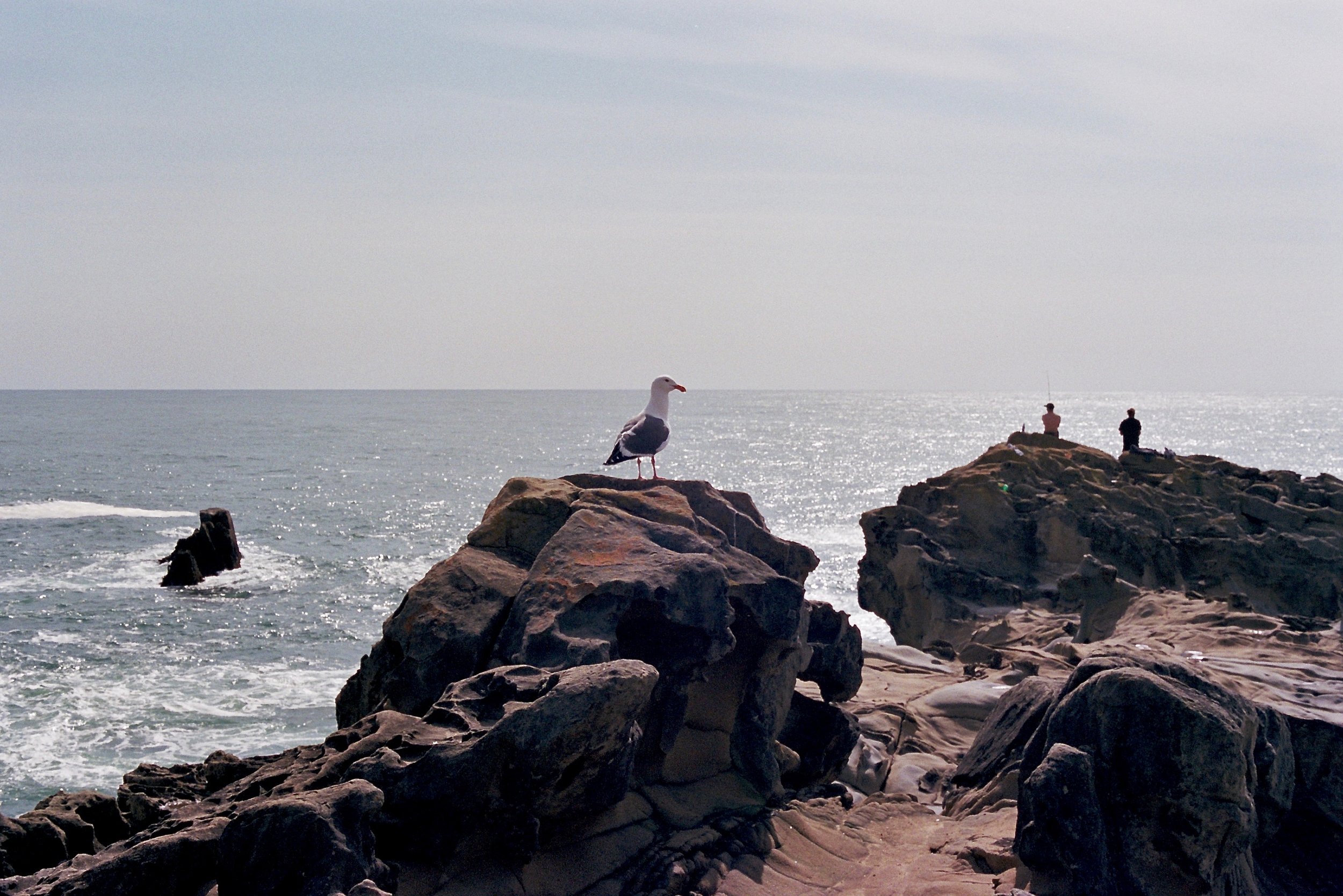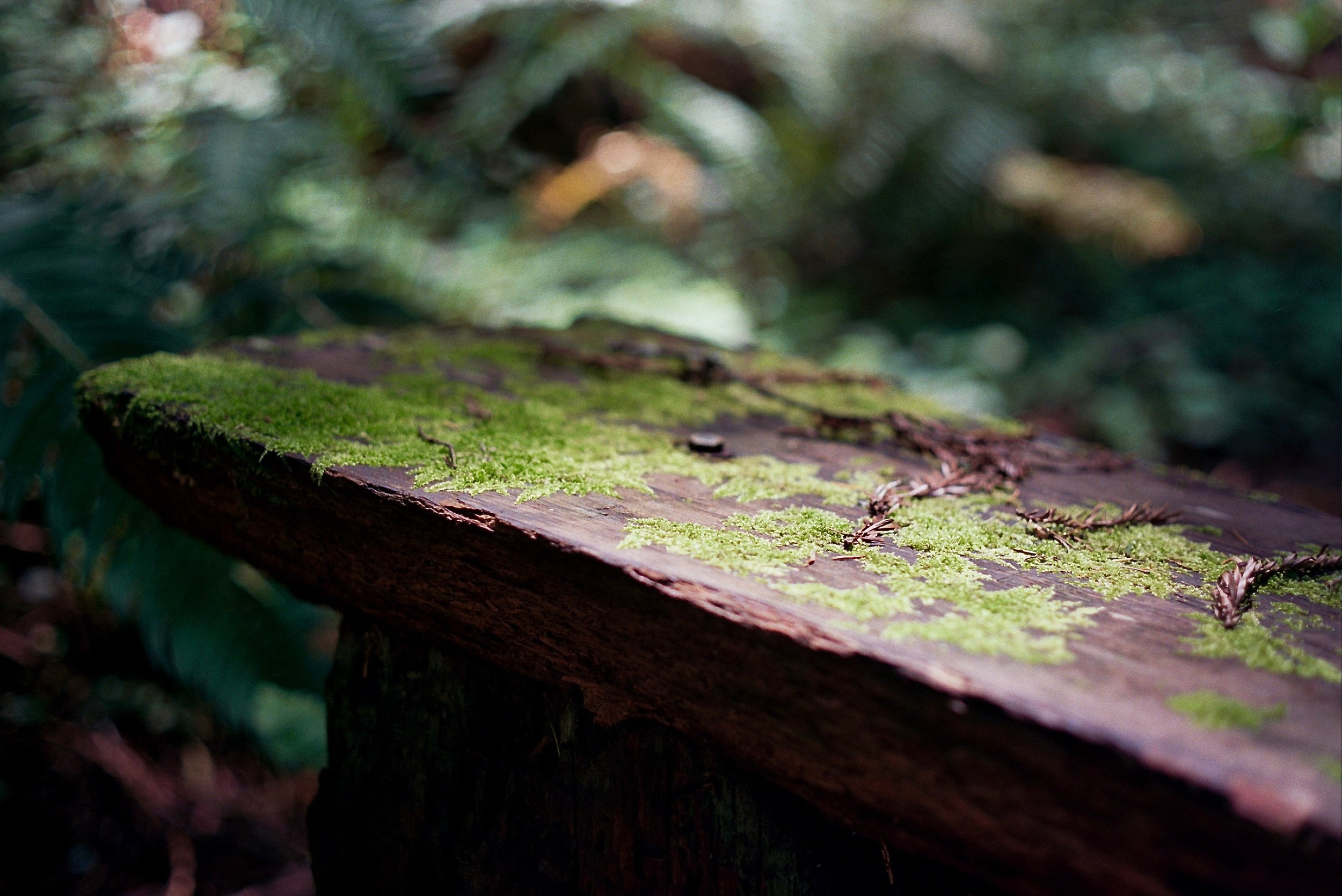Ok
Knowing that I live in Northern California, a number of photography friends have reached out to see if I am ok. I am. Our community is not.
I live in Bodega Bay on the Sonoma Coast and the fires have not reached our little town. My office is in Santa Rosa, however, and that community has been devastated. The Tubbs fire burned down over the mountains and reached into densely populated areas of the city. Hundreds of homes and businesses were destroyed. As of this morning, 13 of my co-workers lost their homes.
There are 15 or so different fires burning in the Northern part of the state. Last I heard, over 100,000 acres have been lost. Homes, businesses and sadly, lives.
Firefighters and police officers from all over the state are here. We are so grateful.
People who live in Wine Country are resilient and we'll get through this. We'll be ok.
The Pentax ES
I've written previously how I had preconceived negative notions about Pentax Spotmatic cameras. I had always dismissed them as primitive SLRs using unavailable batteries. Still, they intrigued me enough to casually shop them online. Because many Spotmatics are nearly five decades old, finding a decent one takes some effort and patience. Indeed, the first Spotmatic I bought on eBay arrived totally dead, infested with fungus and with a corroded battery chamber.
Being the good classic camera geek that I am, I soldiered on and eventually found a decent copy. And in the process of buying and shooting and buying some more, I've learned that these cameras aren't anything like my preconceptions. In fact, they're really very, very good...outstanding even! I learned that the battery thing is a non-issue. The Pentax Takumar lenses that screw onto the front of these things are downright amazing! And, if you can't tell by now, I've fallen head over heels for these Spotties!
I've now acquired and used most every variant; SP, SPII, SPF and ESII. The SP500 and SP1000 are just sub-variants. Completing the Spotmatic "circle of love" is the Pentax ES.
Pentax ES with SMC Takumar 55mm f/2
In 1971, Pentax introduced the world's first SLR with an electronically controlled shutter. Built on the already successful Spotmatic chassis and sold only in Japan, this camera would be called the "Electro Spotmatic." Like the Spotmatic F, the Electro Spotmatic had TTL open-aperture metering with Super Multi Coated and SMC Takumar lenses. There were bugs in the circuitry of the first Electros that were worked out by the time Pentax rolled out the camera worldwide with a totally new circuit board in 1972, just in time for Christmas. The camera's name was shortened to ES. Unlike the other Spotmatics, the standard body color was black and chrome was special order. The ES and later ESII bodies are about a quarter of an inch taller and six ounces heavier than a standard Spotmatic to accommodate the improved electronic circuitry.
I had an ESII for a while and it had some issues. It was a capable shooter but after a week or so, used or not used, the batteries died. And it needed FOUR 1.5v button cells housed in a small compartment under the lens mount. The battery compartment cover on my copy kept falling off. Too many quirks for me.
I acquired my ES from a friend who is retired from Pentax. It was a salesman's sample unit and probably never saw a roll of film.
The ES uses just one 6v #544 battery. I've shot three rolls of film with the ES and have had it for several months and so far, the battery is going strong. The battery compartment is on the front of the camera and to accommodate this, Pentax did away with the self timer. This isn't an issue for me. In 40+ years of photography, I've never once used a camera's self timer.
ES Top Controls
The ES features aperture-priority automation, which is my favorite kind of shooting. Set the shutter speed dial to AUTOMATIC, select your aperture and the ES will dial up the perfect shutter speed. It's a step-less shutter too, which means that if the camera computes the appropriate shutter speed to be 1/555th of a second or 1/112th of a second, that's what you'll get. This was razzle dazzle technology in 1972!
The one odd quirk about this camera is that if you shift to one of the five available manual shutter speeds, it disables the TTL meter completely, so it's aperture-priority or nothing. Again, I love aperture-priority photography, so this is not a deal breaker for me.
Unlike all of the other Spotmatic variants, lightly pressing the shutter release button activates the meter.. This is a feature I wish they added to the SPF. The viewfinder display shows you the shutter speed the camera's automation is selecting for you and like all of the Spotmatics, it's big and bright and Pentax wonderful!
On the ES, Pentax relocated the ASA selector to the rewind crank and I like it in that location. Battery check is easier too. Rather than setting ASA to 100 and shutter speed to B like the other Spotmatics, the ES features a simple battery check button.
Honeywell was the US distributor of Pentax cameras at this time. There is no difference between Asahi Pentax and Honeywell Pentax
The extra height and weight didn't bother me at all. Like all of the Spotmatics, the ES is well balanced and fits the hand well. I like shooting mine with the camera body nestled into the bottom half of the OEM case. Pentax used some pretty decent leather on these cases and most I've seen have really held up well. The original Asahi Pentax straps aren't bad either. They feature a gripper pad that prevents the camera from slipping off of your shoulder.
For the first test drive of my ES, I mounted my 55mm f/2 SMC Takumar lens and loaded some Kodak Portra 400. Testing a new camera is always a good reason for a walk on the beach.
Back home, a quick shot of my fireplace mantle in the late afternoon sun.
I enjoyed shooting the Pentax ES enough to invest in an Eric Hendrickson CLA, although outside of a bit of a stiff film advance, this 45 year old camera performed pretty darn well. This is a testament to Pentax quality during the Spotmatic era.
If you're considering M42 mount lenses, here's my overview of the Pentax bodies I've found most satisfying to use:
SP: My favorite of the early bodies because I love the pentaprism without the flash shoe. Truly one of the best looking of all the film SLRs. I keep a 50mm f/1.4 Super Takumar on mine all the time. You'll get used to stop-down metering...trust me. The Pentax SV-H3V that Paul McCartney is holding below is a predecessor to the SP.
SPF: As I mentioned above, if this camera's TTL meter was activated by a light shutter press rather than when it senses light over 2EV, it might just be my favorite film camera of all time. Keep the lens cap on between shots in bright light and you're fine. If you can find one with a split image focusing screen, grab it fast as they are rare!
ES: It's nice to have a Spotmatic body with aperture-priority automation. Yeah, I could buy the M42 to K-Mount adapter and shoot my screw mount lenses on my LX...but it just isn't the same. If you're considering one of these electronically controlled shutter bodies, stay away from the Electro Spotmatic. The circuit boards are finicky and no one I know still repairs them. Of the ES an ESII, the ES definitely gets my vote.
Things I Miss...
While going through all of my images for my Lightbox Wednesday Project, I came across these photos.
Once upon a time, film manufacturers used to put actual instruction sheets in with rolls of film. I followed these instructions as a teenager while I was learning to develop Kodak Tri-X, Plus-X and Panatomic-X films. Many of us also learned the Sunny 16 Rule from these instruction sheets.
Not sure when these went away, but I miss them.
Lightbox Wednesday #39
So much bad news lately had me scanning images from a seemingly gentler time. Small town, middle class family. This Kodachrome was taken around Christmas, 1962. To shoot this slow slide film indoors in his Retina IIc rangefinder, my Dad used a flood light bar with four bright, hot PAR lamps. My Mom would hold the light bar while he exposed the shot.
The quiet wouldn't last long though. President Kennedy was killed by an assassin's bullet the following November.
Me. Christmas 1962.
Lightbox Wednesday #38 and a Rant
I'm the odd man out, I know that. I have an iPhone, but I mainly use it to take photos of my old cameras for this blog and for Flickr. Whenever I take a photo with my iPhone, the image automatically appears on all my Apple devices. It's convenient and I like that.
My iPhone is a 5. I got it in 2012 from a friend who worked at Apple and I paid $100 for it. I don't ask questions. It's unlocked, so I am not tethered to any one service provider. My previous phone was a 3 and I bought it new because, at the time, I was just starting to need readers too see up close and I liked the big, illuminated numbers on the key pad of that first iPhone. I'd still have it if I didn't forget that I had set it on the roof of my car one day at work while I was loading some stuff in the trunk. Last I heard of my iPhone 3 was the sound of it bouncing off the trunk as I accelerated southbound onto the 101 Freeway.
I rarely talk on my iPhone. The one I have now has a total of just over 7 hours of total talk time in the 5+ years I have had it. I've sent 11 text messages this month. I found a service provider who will sell me a minimum data plan, like 30MB and I think I use about 1.1MB of that each month. That's probably just the amount needed to keep the phone's heart beating...I don't know. I have cellular data mostly turned off and only use wi-fi.
My current phone looks like new because I never carry it with me. It used to be that cell phones were getting smaller and smaller. You could easily slip a Motorola Razr flip phone in your pocket. The latest smart phones are like the size of a piece of toast. I've never felt comfortable with an iPhone in my pocket, so I leave it, mostly, in my briefcase. From Friday afternoon to Monday morning, I rarely even look at my phone. If people need to get in touch with me, anyone who matters knows that email is best.
But I love the iPhone for taking photos of my old cameras and until recently, it's performed admirably. Lately though, the phone's camera seems to be consistently under-exposing images and they all look milky and hazy. I thought there might be a smudge on the lens, but cleaning it did not resolve the issue. On top of that, the battery will hardly last a day without charging. And that's a problem when the owner isn't even really using the darn thing. I'll probably stop in at the Apple Store and see if a Genius can look at it. I'm sure it's coming to the end of its life and undoubtedly they'll ask why I don't upgrade to the 6, 7, 8 or X. I just looked at the price tag of the latest iPhones...OMG!
I'm thinking that I might just look for a digital point and shoot with built-in wi-fi capability, if such a thing exists. That would allow me to take photos of classic cameras, the only thing I am really using my current iPhone for anyway.
In the meantime, one of my favorite iPhone camera photos, an image of my first Nikon F2 from about 6 years ago.
The Canon A-1
This may be the most indifferent camera review I have ever written because, after using it...I'm not quite sure how I feel about the Canon A-1. I wasn't looking for another Canon FD body when this one streamed into my Facebook feed, although I do have to admit that the A-1 was always sort of in my peripheral vision. Some photographers I follow on Flickr do some nice work with their A-1s. And I've stumbled across a couple of YouTube videos with new-to-film photographers gushing praise on this Canon. So for the $60 asking price and the assurance from the almost local seller that this camera was operating as designed, I went for it.
The A-1 was introduced in the late 1970s as one of Canon's A series of cameras, which included the AE-1 which was and still is more popular. The A-1 was the top of the line in the series and from what I can tell, was built more robustly than the other A cameras. The A-1 sits right at that sweet spot in camera design and build where just bits and pieces of plastic were being used on an otherwise all metal chassis. It wouldn't be long before Canon would introduce the EOS line and the industry would embrace plastic construction and blob-like camera bodies.
The A-1 is also a historically significant camera in that it offered every available metering mode plus full automation accessed through a multi-function dial on the top of the camera. This control, revolutionary at the time, would become commonplace on future film and digital bodies. And it's this dial that makes this camera, at least for me, just "eh" rather than "yeah!"
The Multi-Function Dial on the Canon A-1
I'm more comfortable shooting either manually or in aperture-priority mode, so I headed out to a local winery for some indoor shots in their cellar with the A-1 set in Av (aperture-value) mode. The camera was loaded with Tmax 400 and it was my intention to capture some features of the wine crushing equipment and fermentation tanks under available light.
With the A-1 in aperture priority mode, the Canon FD lens is set to "A" on the aperture ring, transferring control to the multi-function dial. The meter in the camera only wakes up when you slightly depress the shutter button and since you're using the same finger to depress the button and spin the multi-function dial, I found this process a bit frustrating and much more time consuming than cameras where you simply adjust aperture on the lens while applying pressure to the shutter release and watch the meter's readout in the viewfinder. I guess Canon intends that you decide on an aperture you want to shoot at, then raise the camera to your eye and let the camera come up with whatever shutter speed is best. If it can't come up with a suitable speed to match your desired aperture, or if you are skilled enough to not like what you see in the digital readout in the viewfinder, than you have to take the camera away from your eye and select a new aperture setting. After fumbling around with this a few times and with only limited time allowed "backstage" at the winery, I shifted the A-1 into fully automatic PROGRAM mode.
Stainless steel fermentation tanks
Once I let the A-1 do all of the heavy lifting, this SLR was a pleasant shooter. The viewfinder is big and bright with a nice split image focusing screen. Shutter speed and aperture are displayed digitally in large red LEDs along the bottom of the finder. Not having to think much about exposure did allow more time to search for interesting subject matter.
Fittings for valves and hoses used in transferring wine from tank to tank
Fermentation tank valve
Barrel fermentation
Cooling and heating pipes above the fermentation tanks
Open fermentation of Pinot Noir grapes
Barrels and stainless steel tank fermentation
Certain barrels are labeled for lab testing
The A-1 performed well in the fully automated mode, although the camera's computer consistently selected slower shutter speeds over opening up the lens more in low light situations. Many of the images here were shot at 1/30th of a second at f/3.5 and I was worried that I'd have some blurred photos. I guess I am steadier than I thought.
So, a few weeks after shooting this camera and now reviewing the images I made, I'm still sitting squarely on the fence. I'm liking these Canon FD lenses a lot, but think I prefer shooting the F-1 body with its AE finder in aperture-priority mode over PROGRAM mode in the A-1. But...it was kinda nice letting the A-1 do all the thinking, freeing me up to concentrate on composition.
On the fence. Six of one, half dozen of another. The joys of photography.
Lightbox Wednesday #37
The Northern Light Surf Shop in Bodega, CA is one of my favorite camera/film-testing subjects. Be it in black and white or color, the little shop is a wonderful subject. As I was sorting through all of my images, I had forgotten just how frequently I had photographed the shop.
Nikon F2 Photomic, 50mm f/1.4 Nikkor-S Auto, Kodak Tmax 100
Olympus OM-2n, 50mm f/1.4 Zuiko, Kodak Portra 400
Continuing Adventures With The 8-Element Super Tak
Of all my vintage lenses, I've used my 8-element 50mm f/1.4 Pentax Super Takumar lens probably more than any other this year. This Super Tak is considered one of the best normal lenses of its era. My copy continues to dazzle me with its sharpness and unique color signature. It's a wonderful lens to use, with buttery smooth focus action and definitive, clicky f/stops. When I transition between this lens and others, they feel crude by comparison.
Mounted on a Spotmatic SP body, protected by its leather half case and slung over my shoulder on a leather 1901 Eggleston strap, this is a kit I really love shooting.
One weekend, one roll of Kodak's Portra 400 with the camera set at ASA 200.
Saturday. Here are two shots at the beach. Shutter was set to 1/500. I was trying to get waves crashing against the rocks. I like how the Super Tak rendered the spray.
There are always plenty of birds that'll pose for you in Bodega Bay. This image shows the sharpness of the Super Tak. Subtle color too.
Close focus is a hair over 17 inches on this lens, allowing you to fill the frame if you desire.
The next day was totally overcast. I headed over to the Russian River wineries to buy a few bottles and get some shots in the vineyards before the grapes were picked.
The close-ups were all hand held. I think this lens could really do some damage with a tripod-mounted Spotmatic.
I will continue to sing the praises of these Takumar prime lenses. I haven't tried one yet that has disappointed. And the 8-element 50/1.4 might just be the best of the bunch.
Lightbox Wednesday #36
I've been cleaning up my archives of images taken over the past 7 years, saving some, deleting many. Every Wednesday, I post interesting images I've revisited over the past week.
Coastal wireless station KPH at Pt. Reyes is one of my favorite spots to visit and photograph. It's quiet, desolate and lonely out there. A perfect break from my noisy, always connected work life.
KPH, first a Marconi Wireless property and later owned by RCA, was once the main radio relay point between ships in the Pacific and the mainland. The National Parks Service owns the property now and a dedicated team of volunteers maintain the station and its aging transmitters and antenna fields.
KPH was a high power Morse code only facility. The receive and transmitter sites are located some miles apart to reduce interference. The receive site is at Pt. Reyes and the transmitters are south in Bolinas.
KPH Receive Site at Pt. Reyes
Feed lines out to the HF antennas at the receive site.
The place really lends itself to black and white film photography. I shot these with my Leica M2 on Acros film.
The transmitter building at the KPH site in Bolinas
There is an abandoned phone booth in the parking lot of KPH. Wireless telegraphy and public phones; two communication forms from a bygone era.
PacBell phone booth at KPH
Royal Quiet Deluxe Typewriter, Nikon F2, 55mm Micro-Nikkor lens
Analogbook
Random notes, thoughts, whatnot...
It's been a busy Summer, allowing far less days for photography than I had hoped for. But Fall on the Sonoma Coast is a delightful time and I look forward to getting out for lots of fresh air and picture taking.
Nikon F2 shot with Nikon F2 and 55mm Micro-Nikkor
A few weeks ago, I sent my Polaroid SX-70 camera in to Matt Widmann at 2nd Shot SX-70 Service. We've been emailing each other back and forth since and I have already learned things about my Polaroid I never knew. A complete report on my SX-70 refurb is coming soon!
One of my two black body Pentax Spotmatic SP cameras is in Eric Hendrickson's shop now for CLA. Once I get it back, I'll have two good serviced SPs to shoot. Maybe keep color in one and black and white in the other? And wow do I love the 50mm 8-element Super Takumar lens!!
Kodak Brownie shot with Nikon F2 and 55mm Micro-Nikkor
I can't say enough good things about the repair folks at Blue Moon Camera & Machine. They did a CLA on my Minolta XD and that little camera is just a joy to shoot now. My little XD is packed with features including aperture and shutter priority automation and full manual control. I have some black and white film in the Minolta as I write this. Blue Moon also did a CLA and battery upgrade on my Canon original F-1. The Canon came back all spiffy and smelling really good. I wrote Blue Moon to ask what that wonderful smell was and Sophia wrote me back and said it was probably the Pliobond adhesive they used on the new seals. Didn't know glue could smell so good!
Weston Master III shot with Nikon F2 and 55mm Micro-Nikkor
I've also had a roll of Acros in my new-to-me Leica M7 for several months now. After shooting my way through most of the Leica M film cameras, I believe I have finally settled on the M that I want to keep. I know that Leica purists will hurl rocks at me for saying this, but I really like aperture-priority automation in a Leica M body. First impressions on this camera soon and full review to come.
Polaroid Land 450 shot with Nikon F2 and 55mm Micro-Nikkor
I hope to get back to San Francisco for one more street photography photo walk this year. I learned so much the last time and even had an "a-ha moment" that I'll be writing about soon.
Vito camera shot with Nikon F2 and 55mm Micro-Nikkor
Any time I think, even just for a moment, that one of my 35mm cameras or even my medium format Pentax 645n is too big or too heavy, I think back to the chap I came across on the Bluff Trail overlooking the Pacific Ocean near Timber Cove a few weekends back. I was shooting my Pentax MX. He had hiked a mile in with an 8x10 view camera!
Life is good.
My well-traveled mug shot with Nikon F2 and 55mm Micro-Nikkor
Lightbox Wednesday #35
My Lightbox project this year has coincided with an effort to reduce the number of film cameras in my collection. Through this process of reviewing almost eight years of work, I am realizing that I've made my most satisfying images with the simplest of tools.
It was a nice evening on the beach in mid-February when I caught this kid playing in the surf with my Pentax Spotmatic F. Open-aperture metering on the SPF and a minimalist user interface contributed to capturing the decisive moment.
Pentax Spotmatic F, 50mm Super Tak, Portra 400 film
Lightbox Wednesday #34
You know it's a busy week when my Lightbox Wednesday post comes on a Thursday.
I didn't expect to get much photography done on this November day four years ago. A heavy, dense fog settled in on the Kortum Trail along the Sonoma Coast as I hiked on the Sunday before Thanksgiving. There was so much moisture in the air, I kept my Leica M4 under my jacket to keep it dry.
As it turned out, I got a number of satisfying images that day even with the fog. This one was my favorite.
Girl On A Cliff Leica M4, 50 Summicron, Portra 400
Simple Joy
One of the nice aspects of having a collection of old film cameras is picking up one that you haven't shot in a while and falling in love all over again. After several months of using more modern cameras, I've just loaded some Acros in my Pentax Spotmatic SP. Whenever I shoot this camera, I marvel at its thoughtful design. Simple. Mechanical. Metal. Gears. Levers. Beautiful!
Pentax Spotmatic SP with 50mm f/1.4 Super Takumar
The SP was the first in a long line of Spotmatic cameras which would introduce a legion of photographers to through-the-lens light metering. Introduced at Photokina in 1960 as a prototype, the first Spotmatics hit store shelves in 1964. Pentax would produce several variations of the Spotmatic over the next ten or twelve years before giving up on the screw mount M42 lens mount in favor of the K bayonet mount system in the mid 1970s.
The SP did not have a built in flash shoe. Pentax sold an accessory slide-on cold shoe for this camera. I have always felt that flash shoes on cameras were ugly necessities and the absence of one on this camera highlights the beautiful sculpted lines of the pentaprism. The SP is a handsome camera! The finish is beginning to wear on my black body SP revealing a stunning patina of brass. The more I use this camera, the better it looks. I can only imagine what my iPhone would look like in 53 years!
Several manufacturers made M42 screw mount lenses that will work on this camera, but the original Pentax Takumars were some of the finest lenses ever manufactured for 35mm SLRs. Pick up most any 50mm f/2, f/1.8 or F/1.4 Takumar and you will have a lens that will just dazzle you. I was lucky enough to stumble across a rare 8-element 50mm f/1.4 Super Takumar and this lens is absolutely amazing!
Since Pentax made so many Spotmatics over the years, these cameras are widely available on eBay. I have seen decent Spotmatics offered for as little as $10. Since the Spotmatic is a fully mechanical camera with a battery that only powers the light meter, you can easily find one that works just fine without any kind of service. If you do need service, for a very reasonable fee, Pentax master repairer Eric Hendrickson can CLA (clean-lubricate-adjust) your Spotmatic and return it to you in almost like new condition.
Spotmatics originally used 1.35v mercury batteries and those have long since been banned. However, some forward-thinking Pentax designer included a bridge circuit in the Spotmatic that allows you to use modern batteries. I use the Renata 387s in mine.
Making photographs with a Spotmatic is a very simple and straightforward affair. Load your film, set your film speed in the little window on the shutter speed knob, compose and focus. Metering is a bit tricky in the Spotmatic because almost all of these cameras use "stop down metering." To meter, flick the little switch on the side of the lens mount up and then adjust shutter speed or aperture to center the needle in the viewfinder. It's a little fumbly at first, but half a roll in, it'll become second nature. I do it now without even thinking.
If you are considering getting into film photography, a modest investment in a Spotmatic body and one or two Super Takumar lenses will provide you with a kit that will tackle most any photographic adventure. Add an Eric Hendrickson CLA and your Spottie will provide pure simple joy for many years.
You can find Eric Hendrickson here: www.pentaxs.com
Here are some shots from earlier this year with the SP and 50mm f/1.4 Super Takumar 8-element lens:
Street Photography With The Leica M
My photography is, for the most part, a solitary endeavor. A man with a camera, taking pictures of things or places. I don't believe there is anything wrong with this, especially when I spend most of my time in the busy, noisy, people-filled environment of retail automotive marketing. I can really recharge my batteries by getting away and standing alone on a windswept cliff trying to get the perfect exposure of a Pacific coast sunset.
I am aware however that this kind of photography is a very safe space for an essentially reclusive person like me. Unless it is work-required, I avoid social gatherings and crowds make me uneasy. And as much as I could probably spend the rest of my days happily clicking away on some desolate stretch of beach waiting for the waves to splash just the right way or the sun to glint perfectly off the surf, there is an insistent nagging within me to photograph people.
I realize for me, this is a 12-step program. As much as I'd like to immediately sign up for a workshop where professional models pose as I hone my portrait skills, I know I need to move through this process slowly and methodically. And so, I am starting with street photography. My tool is the Leica M rangefinder and my classroom is San Francisco.
Through two sessions this year and last, I've challenged myself to learn the craft of the street photographer. You'd think this would be an easy process. Grab a camera. Go somewhere where there are people. Take a bunch of pictures. As the world passes by your lens, you might get a good shot. As luck would have it, sometimes this works. This shot I took last year in Chinatown is an example.
The man with the sunglasses, the woman reacting, the parade dancer, bystanders with their smart phones. A slice of life moment on the streets of this fascinating neighborhood. This had all the potential of being a really good street shot. I clicked this off as I was practicing zone focusing, which is critical if you are going to capture "the decisive moment" with a manual focus camera. If I had moved in closer and concentrated on my composition, this would have been a stronger photograph. As it was, I was oblivious to my subject, obsessed with the markings on my lens and just happened to get what little I got by pure luck.
What is zone focusing? Essentially, it means setting your focus and aperture in such a way that whatever you shoot within a pre-determined distance will be pretty much in focus. Once you are out on the street and start shooting, this will enable you to react quickly, making only small focus adjustments rather than fumbling around like I was. Becoming skillful at this also requires you to spend a lot of time with one camera and one lens. Cartier-Bresson shot almost exclusively with a Leica rangefinder and a 50mm lens. I know this is an over-used expression, but when you shoot one camera and one lens over and over again, I can imagine that the device does begin to disappear and become a true extension of your own eye.
Another thing I have learned in street photography. Move in close and then, move in even closer. This is the concept of street photography that will be difficult for me to master. It requires some interaction with your subject and the possibility of getting a negative reaction. I made several shots of the man in this fish shop from some distance away. They all looked like vacation snapshots. Finally, I moved in closer.
I liked the interaction of the shopkeeper and his customer. The attention of the man passing by and the blurred motion of the people in the foreground all combined to accurately depict daily life on the streets of Chinatown. I nailed the focus here and was pleased that the exposure revealed good detail inside the shop without overexposing anything outside on the street. While I was taking this photograph, I was worried that the shopkeeper might be upset that I was taking pictures of him. Ultimately, after this shot, he saw me and smiled. I wished I still had the camera to my eye.
Some of your subjects might not be so gracious. I was trying to get a good shot of the two kids in the left of this next frame. They were lighting small firecrackers and enjoying the startled reaction of passers by. The facial expressions of the young girl were priceless but right after this shot, as I moved in, she became aware of me and my camera and ran inside.
I've done all of my street photography so far with my 35mm Summicron lens. In this case, if I had been using my 50mm Summilux and stepped a few feet to my right, I might have captured a nice slice of life before the girl fled for the safe confines of the produce shop.
My 50 would have helped in this next shot as well. Using the 35 and my reluctance to leave the comfort of the recessed storefront resulted in ordinary when it could have been extraordinary.
Sometimes, all that is required in getting a satisfying street shot is to simply be patient, wait and watch the world go by. I got this next shot outside the Ferry Building on San Francisco's Embarcadero. So San Francisco...mother on her smart phone and kids being kids.
I was trying to get a good shot of this meat shop in Chinatown when the woman walked into the frame and peered through the glass. She paused for only a moment and then went on her way.
Late on my most most recent shooting day, I settled back into my comfort zone and photographed the clock on the Ferry Building in the setting afternoon sun. I'm still far better at this kind of shooting. When I posted this on Flickr, it showed up in Explore and has over 5,500 views.
I am hoping to get better at this and get more comfortable shooting on the streets and eventually, maybe...even doing some portrait work. We shall see.
Up next: Street Photography With The Leica M & My Ah-Ha Moment!
Lightbox Wednesday #33
Over the course of this little lightbox project of reviewing, deleting or keeping images from the past seven years of film photography, my instant shots are mostly throwaways.
Coming to that conclusion, I have decided to send my Polaroid SX-70 off to Matt Widmann of 2nd Shot SX-70 Service in Upstate New York for a complete CLA. Matt is going to rebuild my Polaroid and has agreed to share the process here; photos and narrative.
Perhaps shooting a properly functioning SX-70 with the latest Impossible Project film will finally provide a satisfying instant photography experience.
My Polaroid 450 shot with my Polaroid SX-70
Lightbox Wednesday #32
As I work my way through hundreds of film images I have shot since 2010, I never quite know what to do with the small number of photographs I have made on slide film. While color print and some black and white films are forgiving of exposure errors, slide film isn't. Knowing how to meter for shadows or having a camera with TTL matrix metering is almost essential in getting fine quality chromes.
I don't think I have ever really made a satisfying image on slide film. Mostly, it's because I don't shoot enough of it to work my way through to exposure competency. Almost all of my recent work has been on Velvia 50 and 100, films that just gush super saturated color. When I shoot these films, I seem to always get color that just seems, well...off.
Kodak is bringing back Ektachrome later this year. Maybe I will try some of that.
Bodega Head, CA (Contax RX, 50 Zeiss Planar, Velvia 100)
Tagged Picnic Table, Bodega Head, CA (Contax RX, 50 Zeiss Planar, Velvia 100)
Lightbox Wednesday #31
I've just about edited and cleaned up my archives of work from the past seven years. It's interesting revisiting photographs you took years ago. How many you keep and how many get deleted.
This one is a keeper and the only image I have taken so far that has earned me money. A local company licensed this for use on collateral materials for an internal sales incentive trip. Does that make me a professional photographer? I don't know, but it sure is nice when someone appreciates your work enough to want to pay for it.
Top Ten Reasons to Shoot Film in 2017
With apologies to David Letterman, my "Top Ten" Reasons to Shoot Film in 2017...
The author with his Hasselblad
#10: You'll look cool. When I got back into film photography in late 2009, walking around town with an old film camera just kinda made me look like a goofy, old luddite. This past weekend on my photo walk in San Francisco, I was amazed to see so many hipsters shooting with their Rolleicords, Holgas and Canon AE-1s. Now, I'm retro-cool.
ASA/ISO, Shutter Speed, Exposure Compensation
#9: You'll understand how and why things work. Working with software (film) with a set ISO/ASA, you really begin to understand how aperture and shutter speed effect your exposure. You'll learn about "pushing" and "pulling" film and how different film stocks can give your work different looks.
A shot I didn't expect to come out at all
#8: Anticipation. Without the ability to stare down at a little screen and look at the image you just made, anticipation and excitement will build as you wait for your film and scans to come back from the lab. Sometimes, a shot you didn't think was going to be anything turns out to be truly something!
Ultrafine film processed in my kitchen
#7: If you don't want to anticipate, process it yourself. Developing your own black and white film at home is easy, fun and quite inexpensive. With a few chemicals, plastic developing tank and changing bag, you can control the photographic process from start to finish. There are even kits for home processing color (C-41) film.
Shot with a Nikon F2, 85mm Nikkor lens on Kodak Tri-X Pan film
#6: Drive a BMW for the price of a Chevy. When digital photography pushed film cameras to the brink of obsolescence, equipment became ridiculously cheap. Amazing film cameras that originally cost thousands of dollars can be had for next to nothing. A pro level Nikon F2 with a 50mm f/1.4 Nikkor lens sold new for around $3500 in today's dollars. I bought one at my local camera store in 2015 for $125. This was state of the art photography in the 1970s. The F2 is still amazing to use and makes first rate pictures.
Sunday walk with Leica M4, 50 Summicron, Kodak Tmax 100
#5: Lower your pulse rate. Film photographers talk about how film "slows you down." Of course it does. The whole process of removing a roll of film from its package, winding it on and adjusting film settings is a slower and more deliberate process. When you're limited to 12, 16, 24 or 36 exposures on a roll, you tend to take a breath and think before firing the shutter. There's something incredibly cathartic about a slow Sunday walk with a camera.
#4: G.A.S is fun! Almost all of us in this hobby have varying levels of G.A.S. or Gear Acquisition Syndrome. And at one point or another, we have too many cameras and start talking about "thinning the herd." As soon as we do and the PayPal balance swells, we're hitting the BUY IT NOW button on eBay. Truth is, buying and trying old camera gear is loads of fun. I love unboxing a new/old camera for the first time. And I love being pleased by a camera I didn't expect to like.
I made this image on Kodak Panatomic-X film that expired more than 40 years ago!
#3: Film isn't going away. Just a few years ago, film manufacturers were killing off film types right and left. For a while, it looked like the end of analog photography was near. Today, the future looks bright. Kodak Alaris is vibrant and healthy, reintroducing Ektachrome slide film later this year and kicking around bringing back several legacy film stocks. Ilford over in the UK reports film sales are up. Fuji continues to make several kinds of color print, slide and black and white films. Film Ferrania is selling black and white film and soon will introduce a color slide film. The Impossible Project continues to improve their recipes for Polaroid instant film and niche films like CineStill and JCH Street Film are fun to shoot! Want to live dangerously? You can find tons of expired film for sale online and the results can be extraordinary!
My style is certainly influenced quite a bit by where I live. (Pt Reyes Lighthouse, Leica M2, Acros film)
#2: Find your artistic inner-self. I follow several photo hobbyists, either through their blogs or their Flickr posts and it has been rewarding watching them grow from buying and trying a few old film cameras into artists with developing, unique, personal styles. You can literally see the moment that they find just the right tool, the right film and choice of subject matter that clearly shows a signature shooting style.
I've heard stories that Ansel would welcome photographers into his home for an impromptu photo chat. (Nikon FM2n, Kodak Portra 400)
And the #1 reason to shoot film in 2017...The people. Since late 2009, I have met and become friends with some of the most amazing, kind and generous people. Film photographers are so giving with their time and expertise. You're never made to feel foolish for asking a question. Can't figure something out and can't find the answer on Google? Post your question on a film photography blog and everyone will be pitching in to help. I've found camera repair people who work on most every brand of classic camera, who do excellent work at reasonable prices and share our passion for keeping these old machines alive and relevant. The Flickr community is wonderful, the feedback from fellow photographers helpful and the occasional praise is encouraging. eBay sellers in the film community are, for the most part, honest and fair. Online retailers like B&H Photo and Adorama are well stocked, ship fast and stand behind what they sell. The last remaining nearby brick and mortar photo shops; my local Shutterbug Camera and the The Leica Store in San Francisco, always welcome me in by name and with a smile.
There you go. My Top 10 Reasons to Shoot Film in 2017.
Lightbox Wednesday #30
I am so fortunate to live within walking distance of the Pacific Ocean. With a photographic subject so grand literally on my doorstep, it's no coincidence that coastal images dominate this site.
Living in the Arizona desert for most of my adult life, I had no idea how much a beach changes day to day and even from high to low tide. I can visit the beach one day and it's a vista of smooth, windswept sand. On other days, the water has washed it all away, revealing the rocks below.
I made this photograph on the last day of 2015 with my Contax RX and Carl Zeiss 50mm Planar lens. The film stock was Kodak Plus-X.
Sonoma Coast near Bodega Bay, CA


